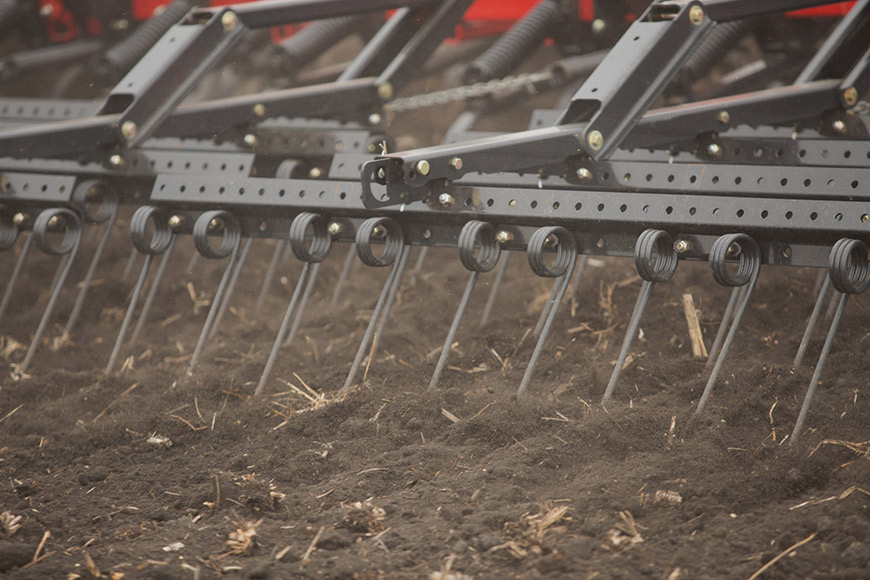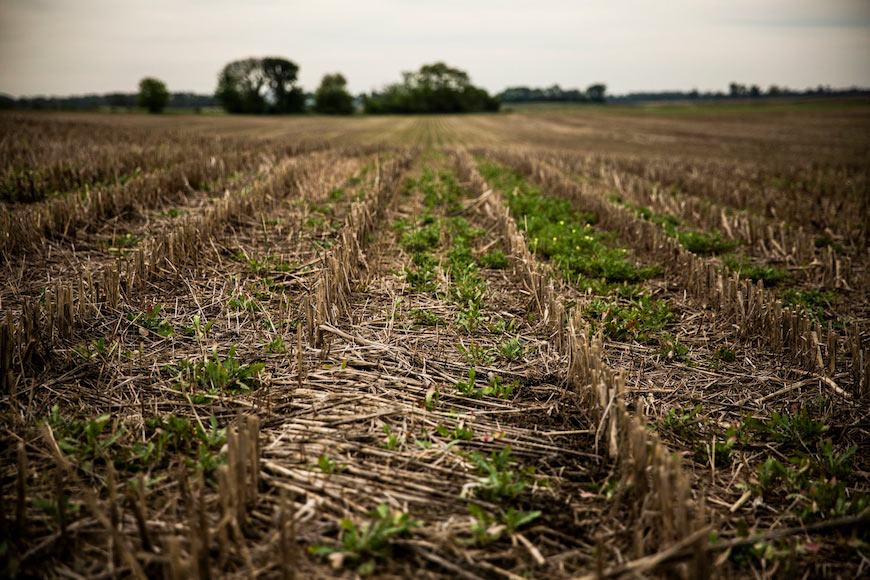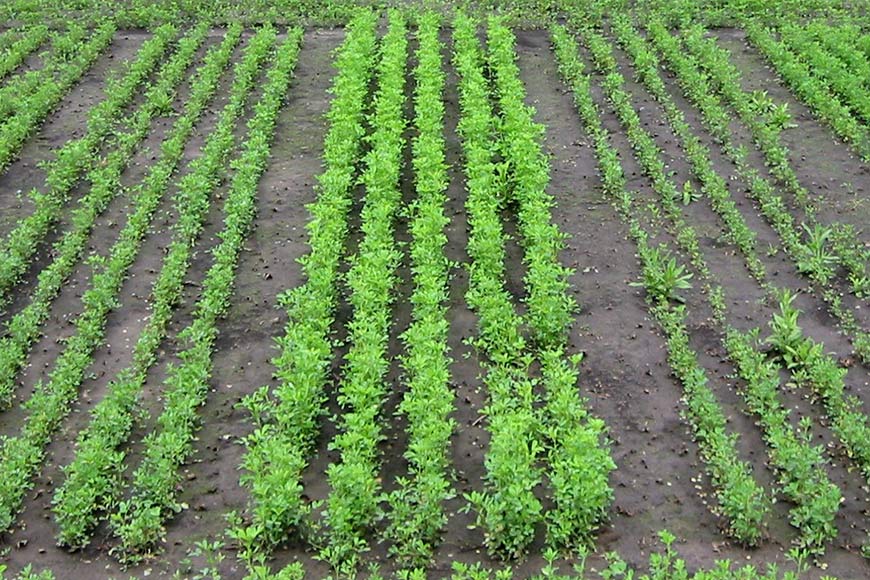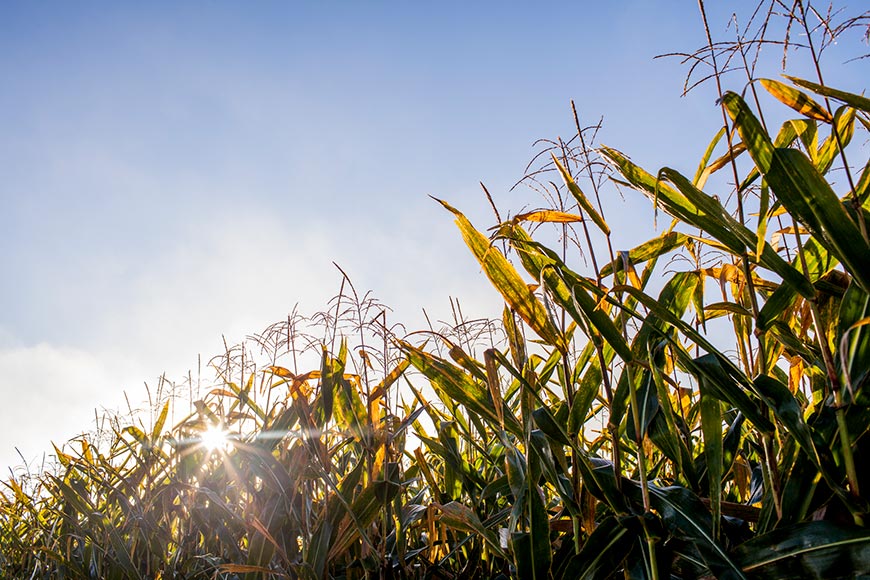Combine Land and Weed Management for 2019 Success

It’s time to formulate your land management and herbicide programs for 2019. Here’s how combining these strategies can provide optimal weed control without sacrificing sustainability.
Herbicide choices
If your 2018 herbicide program adequately controlled weeds, you’ve dramatically reduced the weed seed bank potential for next year’s crop. If some of your 2018 herbicide choices didn’t work as planned and you have weed seed that scattered when you harvested, you’re going to have some challenges come spring. This will make applying a residual herbicide at preemergence particularly important.
One option is Threesidual™ herbicide, which contains three active ingredients from three different sites of action to manage weeds in field and silage corn. Add InterLock® adjuvant to the tank mix to achieve optimal deposition.
Tillage system
If you are a no-till soybean farmer, it’s important to do a spring burndown with some glyphosate and dicamba prior to planting. And you should apply a broad-spectrum residual herbicide such as PREsidual® herbicide to prevent weeds from emerging. If you use conventional tillage, you will eliminate those weeds during the tillage process, so you don’t need to spray before you plant. However, you will need to apply a preemergence herbicide such as PREsidual herbicide, Charger Basic® herbicide or Dimetric® EXT herbicide, mixed with InterLock adjuvant.
Sustainability goals
Conventional tillage, of course, churns the ground up, which can lead to erosion, versus no-till, which reduces it. However, no-till requires more herbicides, which are safe when used according to label directions. If you are a conventional farmer who is trying to work some no-till plantings into your operation, be sure to use a broad-spectrum herbicide program that manages all weed species. Such a program might include applications in addition to the normal spring and early-summer spray times to achieve effective control.
Likewise, planting a cover crop can be a good choice for no-till farmers, since it can help reduce soil erosion, preserve topsoil and create better soil structure as a result of its active root system development. Cover crops can also be used effectively with conventional tillage.
Agronomist recommendations
Remember that controlling broadleaf weeds such as waterhemp or ragweed can require a different herbicide system than when managing grass species such as foxtail. If you haven’t done so, let your local trusted advisor know specifically which species of weeds and/or grasses were problematic in your fields this season. Then determine which products can manage the issues and what land management practices will best complement that strategy.
Herbicide choices
If your 2018 herbicide program adequately controlled weeds, you’ve dramatically reduced the weed seed bank potential for next year’s crop. If some of your 2018 herbicide choices didn’t work as planned and you have weed seed that scattered when you harvested, you’re going to have some challenges come spring. This will make applying a residual herbicide at preemergence particularly important.
One option is Threesidual™ herbicide, which contains three active ingredients from three different sites of action to manage weeds in field and silage corn. Add InterLock® adjuvant to the tank mix to achieve optimal deposition.
Tillage system
If you are a no-till soybean farmer, it’s important to do a spring burndown with some glyphosate and dicamba prior to planting. And you should apply a broad-spectrum residual herbicide such as PREsidual® herbicide to prevent weeds from emerging. If you use conventional tillage, you will eliminate those weeds during the tillage process, so you don’t need to spray before you plant. However, you will need to apply a preemergence herbicide such as PREsidual herbicide, Charger Basic® herbicide or Dimetric® EXT herbicide, mixed with InterLock adjuvant.
Sustainability goals
Conventional tillage, of course, churns the ground up, which can lead to erosion, versus no-till, which reduces it. However, no-till requires more herbicides, which are safe when used according to label directions. If you are a conventional farmer who is trying to work some no-till plantings into your operation, be sure to use a broad-spectrum herbicide program that manages all weed species. Such a program might include applications in addition to the normal spring and early-summer spray times to achieve effective control.
Likewise, planting a cover crop can be a good choice for no-till farmers, since it can help reduce soil erosion, preserve topsoil and create better soil structure as a result of its active root system development. Cover crops can also be used effectively with conventional tillage.
Agronomist recommendations
Remember that controlling broadleaf weeds such as waterhemp or ragweed can require a different herbicide system than when managing grass species such as foxtail. If you haven’t done so, let your local trusted advisor know specifically which species of weeds and/or grasses were problematic in your fields this season. Then determine which products can manage the issues and what land management practices will best complement that strategy.






